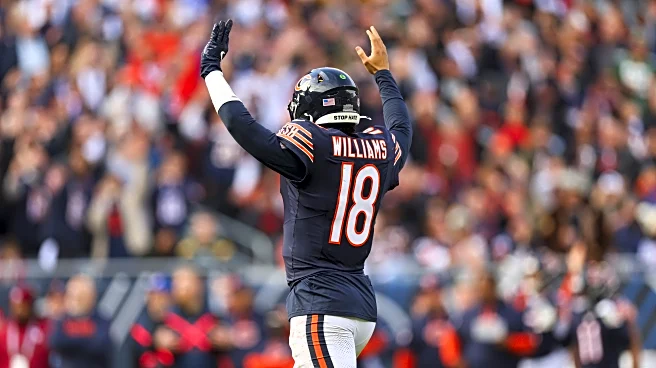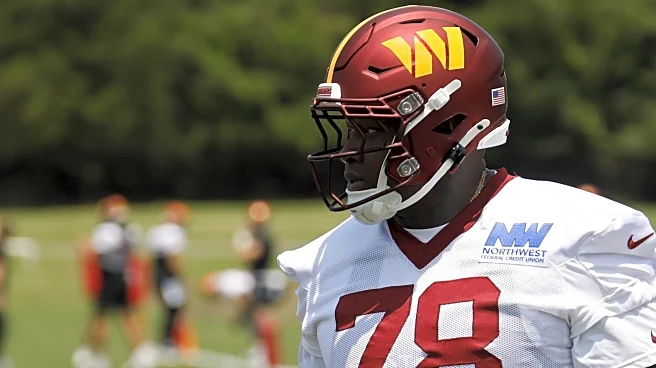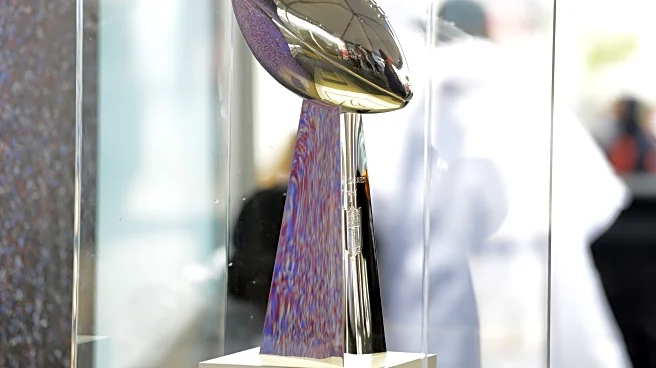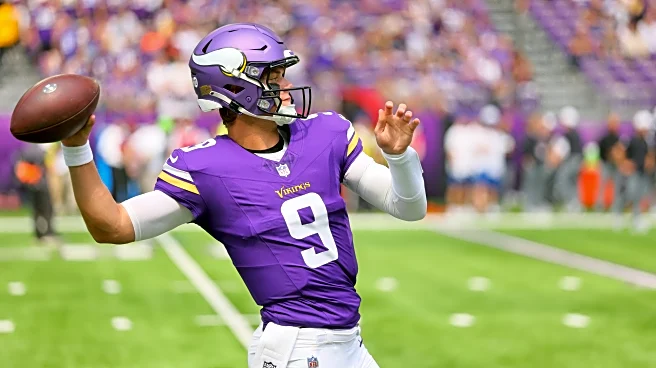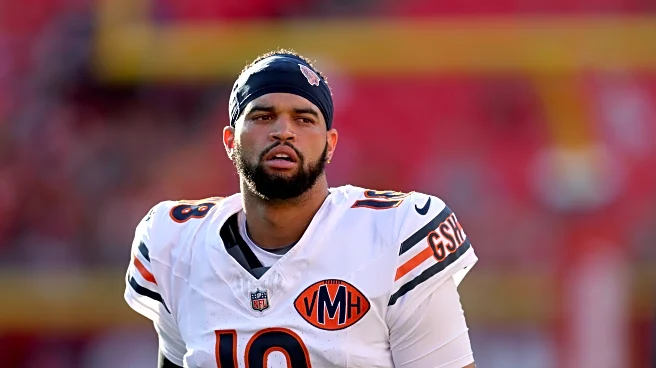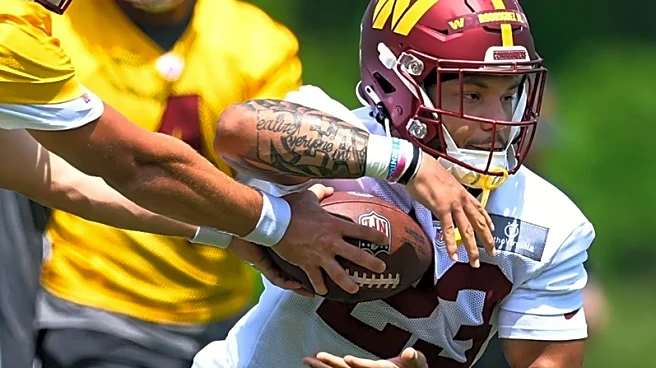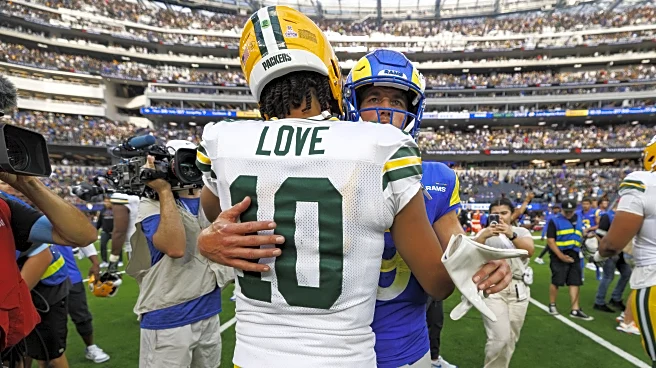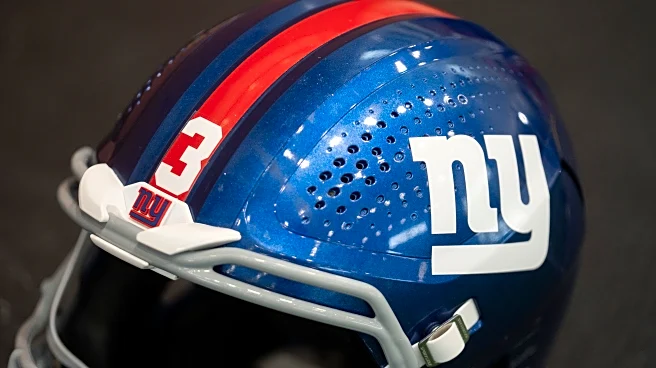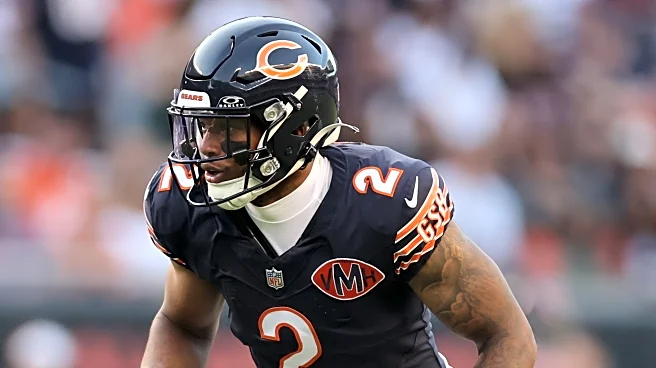
Optimism reigns supreme for all 32 teams as the 2025 NFL regular season kicks off this week, starting on Thursday night. For the Chicago Bears, there’s plenty to be excited about. First-year head coach Ben Johnson has been considered a top candidate for years due to his offensive mind, and he brings a diverse and talented coaching staff with him. Additionally, Chicago was one of the more active participants during the acquisition period. Although it’s key to never mistake activity for achievement,
it’s easy to see how this roster is vastly improved. Coupled with a better coaching staff, there are plenty of reasons to expect this team to take a big step forward in 2025.
Can the Bears break their five-year playoff drought in one of the toughest divisions in football? We’ll dive into these questions and much more on a pre-Week 1 edition of 10 Bears Takes.
1. Establishing “fair” yet firm expectations for 2025.
Rewinding to Johnson’s opening press conference in late January, something he said stood out. Despite taking over a team that won five games in 2024 and plenty of questions all over the roster, the first-year head coach came in with a “win now” attitude and said as much throughout his first media availability session.
While it’s fair to say that the objective of any sport is to win, we’ve seen plenty of newly hired head coaches shy away from early expectations. Not Ben Johnson. His message has been clear since Day 1, and more importantly, he has not wavered from that. Even so, it’s fair to wonder what the ceiling is for a team that has won a combined 15 games over its previous three seasons. Some view being “realistic” as setting obtainable goals that show progression (ie, a seven, maybe eight-win season), while others recognize how quickly a team’s fortunes can turn around over the course of a 17-game stretch.
Far too often, I’ve gone into a season with what I’ve felt were realistic expectations, just to be slapped in the face by a much harsher reality by the middle of October. There’s nothing more embarrassing than projecting a winning season, just to see them end up with another Top 10 pick. Similar to the Bears’ quarterback failures of the past, any objective fan will always look to adjust their process for setting realistic expectations for the upcoming season. I’m no different.
One of the mistakes I’ve learned from is not ignoring warning signs early in the process. For example, heading into 2019, I should have been more cognizant of Mitchell Trubisky’s regression at the tail end of the regular season and the first three quarters of their playoff loss to the Eagles. Coupled with his continuous lack of sustained progress throughout training camp in 2019, there were plenty of signs that things simply weren’t clicking the way many of us had hoped at the time. More recently, 2024 was another lesson in not living in the moment. I knew (without a shadow of a doubt) that retaining former head coach Matt Eberflus was a mistake. Despite a few bright moments early in Year 1, his in-game coaching decisions and inability to provide a straightforward answer were significant red flags. Considering the need to dismiss multiple coaches (due to various reasons), there should have been no real reason to believe Eberflus could get the offensive coordinator hire right and develop a rookie quarterback. Instead, I allowed the hype of a 4-0 preseason, Hard Knocks shine, and a more talented roster to skew my feelings about Eberflus’ track record.
Being an objective observer should always come with the responsibility of accountability and growth from past mistakes. That’s why I went into this offseason with a simple approach: Don’t overlook anything. Don’t ignore warning signs and “surprises” that weren’t previously forecasted by the coaching staff or front office.
In reality, the Bears had an outstanding offseason. I know that has been said in the past, but intentionally addressing the trenches was a top priority for this team once they hired an offensive-minded head coach. For all of the talk about needing a “leader of men” being their top objective during the head coaching search, it’s fair to categorize Johnson as both that leader and one of the best offensive minds in football. Johnson’s influence on the personnel additions has been evident from the start of the acquisition period to the present. Similar to the approach he took when hiring his coaching staff, the former Lions offensive coordinator knows what he wants his offense to look like. That led to pre-free agency trades for Jonah Jackson and Joe Thuney, as well as a quick strike in free agency to secure center Drew Dalman. In less than a week, the Bears completely reshaped the interior of their offensive line with three credible, if not Pro Bowl-level starters.
For the first time in the Ryan Poles era, it feels as if the Bears are building their roster the right way– From the inside out.
Now, that doesn’t mean that this roster is without question. Despite being a relatively young team, there are numerous unproven talents expected to play key roles on both sides of the ball. That’s what happens when good teams rely on their draft talent to make a difference and develop into core pieces of a roster. Fans shouldn’t be afraid of that unproven label. The best teams in the league build through the draft, which means every player starts as “unproven”.
More importantly, it’s impossible to ignore the parity around the league each season. How many people had the Washington Commanders going from the No. 2 overall selection in the 2024 draft all the way to the NFC Championship game in just one year? A similar argument could be made for the Houston Texans and C.J. Stroud a year previous. Most teams that go from worst to first have one thing in common: a young quarterback and a new coaching staff that is building its own brand. The Bears have both, even if they made the same mistake of firing their coaching staff a year after spending a first-round pick on a quarterback.
Johnson set the bar for this team early on, and fans should not shy away from that. Does that mean it’s playoffs or bust in Year 1 of the Johnson era? Absolutely not. Nuance is always needed, especially with a new coaching staff. That said, expecting a winning season should be the “standard” for fans. Whether that’s 9-8, 10-7, or even 13-4, finishing with their first winning record since 2018 should be the goal. Far too often, we expect growth and success to occur within a specific timeframe or follow a predictable path. The reality of ascending teams is typically quite different, though. There aren’t incremental improvements from year to year until bam, they’re a Super Bowl contender. Most successful teams break out one season and never look back. For my money, that’s precisely what I’m expecting from the Bears in 2025. Break out and don’t look back. Even if that results in a 9-8 season, where they are in the playoff race but lose out due to a tie-breaking scenario. Find a way to finish with a winning record. It should be that simple, especially when considering future roster construction and how much the front office committed to the core they built throughout this offseason.
2. Following an uneven training camp and preseason, how far along is second-year quarterback Caleb Williams, and what are realistic expectations for his sophomore season?
It would be fair to label the start of training camp as “alarming” if it weren’t for Johnson’s honest and open messaging for his second-year quarterback throughout the process. In the opening week of practice, the offense struggled mightily. Between the presnap penalties, inability to consistently get to the line with enough time to diagnose the defense, and Williams’ uneven performances as a passer, Bears fans were already in panic mode. It didn’t help that any national media outlet that visited a practice in that first week had very little good to say about the progression of the offense.
Luckily for fans, Johnson’s ability to maintain transparency throughout this process has allowed very little in-between when it comes to their goals. As a whole, the Bears’ offense had 12 installs, which butted up to their first joint practice with the Dolphins in mid-August. Once those installs were completed, the frequency of success for the Bears’ offense grew. It was capped off by a strong opening series that went 92 yards for the starting offense against the Bills in their second preseason game.
It felt like things were trending in a positive direction until an ugly outing against the Chiefs’ starting defense in their preseason finale. For those looking for a silver lining, capping off the final two drives with 10 points was nice, but that touchdown came against Kansas City’s second-team defense. For as strong as the positive reactions were after Williams’ preseason opener, the pendulum swung back just as hard five days later following their trip to Arrowhead.
What can we take away from those two preseason games? Not much. Every year, we put far too much value on the preseason. For as fun as it can be to react in the moment, we aren’t clued in to the team’s goals for those reps, and there’s virtually zero game-planning that goes into those snaps. Very rarely do preseason performances translate into success in the regular season. That’s just the reality of this process. Instead, it’s best to listen to what the coaches are saying and how they are saying it.
By all accounts, Williams’ progression has been noticeable. Has it been as quick or as vast as they had hoped? Maybe. Maybe not. What’s most important for this new head coach and quarterback pairing is that they remain on the same page. Williams must trust the process, and Johnson must remain patient. After all, Johnson has acknowledged on multiple occasions that the Bears’ offense in 2025 wouldn’t be at the same level of complexity as it was during his final year in Detroit. These things take time. That’s not an excuse, it’s just a reality.
Establishing realistic expectations for any young quarterback can be challenging, especially when Williams’ performance is actively compared to Jayden Daniels’. If you ask most who are viewing this from an outsider lens, Daniels is well on his way to an MVP, while Williams is fighting off the bust label, and maybe even Tyson Bagent for the starting role. The truth is far more complex than most outside perspectives can understand, but despite the organization’s best efforts, the outside noise cannot be entirely ignored. It’s simply the nature of the beast, especially in a media market like Chicago.
It’s fair to prepare for the potential of a slow offensive start. This is a complex offense that has just two players on the entire roster with previous experience under Johnson’s offensive leadership. In addition, the Bears will be trotting out three new starting offensive linemen, all on the interior. As Johnson has pointed out on multiple occasions, it takes time for any unit of five to gel, especially when all three newcomers play a standard position. It hasn’t helped that the ongoing competition at left tackle never really reached a complete resolution.
Even with all the caveats on the table, this should be an offense—and a quarterback —that sees a substantial jump by the conclusion of the 2025 regular season. Williams doesn’t need to play at an MVP-level for this season to be regarded as successful. Playing within the structure of the offense, taking what the defense gives him, and drastically reducing his sack numbers would be a sizable step in the right direction. There’s no denying Caleb’s physical gifts. He’s one of the more talented quarterbacks in the league, but now he must learn to play consistently within structure and on time. If he can do that, the offense’s ceiling should be inside the Top 10. If not, we’ll have to see if Johnson can adjust and find ways to allow him to reach his potential with an “easy button” approach.
If you’re looking for expectations through numbers, here you go:
(65%) completion rate, 4,000-plus passing yards, 27 touchdowns, and less than 10 interceptions.
Other metrics: 7 (or higher) yards per attempt, Top 15 in EPA and CPOE, and a sack total of 45 or below.
3. While it’s easy to argue that Williams is the most critical offensive factor, it’s worth wondering how the rest of his skill-position players will pan out as the season moves forward.
As most fans learned last year, sometimes having “too many” weapons can be an issue. Especially when they are misused or share a similar skill set, the good news is that Johnson is a much more creative offensive mind and knows exactly what works. That was evident after the team spent its first two picks on pass catchers. The presence of Colston Loveland not only gives them the ability to run more 12-personnel formations, but his ability in the open field should also provide the coaches with the flexibility to move him out wide as a larger receiver. The bigger question might come down to who stands out at receiver.
Simply put, D.J. Moore was not used appropriately last year. Although I wouldn’t classify him as a “deep threat”, using him almost strictly on screens or vertical routes felt like a complete waste of his value. Moore is at his best when he gets the ball in the open field. If the preseason was any indication, Johnson’s creativity will allow Moore the chance to touch the ball in space and out of the backfield. The rise of Rome Odunze is something everyone is expecting. After a strong camp, it’s fair to wonder if he finishes the season as the team’s WR1. One of Odunze’s most significant issues last year was rookie-related, and it was mainly on the mental side. If he can find more consistency, especially in 50/50 situations, he’ll end up being the ideal big-bodied receiver who should account for plenty of touchdowns.
The final two names on the depth chart that should make an impact are the most interesting. By all accounts, Olamide Zaccheaus was the offense’s most consistent weapon throughout camp. He was always open, making big plays, and seemed to quickly earn the trust of his quarterback. The former undrafted free agent is going into his seventh year in the league and has never eclipsed the 600-yard receiving marker. Even if he profiles as a reliable third-down option and a trusted target for Williams, there is plenty of value in that. It’s just worth wondering if his limited ceiling will eventually cost him snaps to Luther Burden III. From a talent standpoint, Burden might be their most exciting skill position player. Despite lasting into the second round of April’s draft, he was widely regarded as a first-round talent. He showed plenty of flashes in camp and the preseason, even after missing multiple months of valuable practice time. Without the soft tissue injury that plagued him early in the offseason program, it’s worth wondering if he would be headed into the regular season with a bigger role.
I’d expect tight end Cole Kmet to still have a defined role moving forward. Even if he’s not on the field for 80% of snaps, he holds plenty of value as an inline tight end that can be a safety blanket over the middle of the field. Barring any injury, it’s hard to envision many scenarios where undrafted rookie Jahdae Walker or Devin Duvernay produce much in the way of offensive production.
Comparing how things look in Week 1 versus how the regular season ends in Week 18 will be fun to look back on. My gut tells me that Odunze and Burden will finish the season as the two primary receivers, with Loveland receiving the lion’s share of the work as the pass-catching tight end.
4. Plenty of focus has been placed on left tackle, and rightfully so. Why Braxton Jones (or any other candidate on the roster) being the weakest link is still a sizable upgrade over last year, but will it be enough in the NFC North?
Following an active acquisition period that saw the Bears rebuild their entire interior line in less than a week, it was always going to be a natural progression to focus on the “weakest link”. Although right tackle Darnell Wright still has plenty of room for growth, his status as a starter has never been in question. It’s also fair to assume that had Jones not broken his ankle late last season, there might not have been any sort of competition for the left tackle job at all.
On the surface, the competition felt “safe” with plenty of upside. Not only did they have a three-year starter leading the race, they had spent a pair of Day Two picks in back-to-back drafts on tackles in Kiran Amegadjie and Ozzy Trapilo. After all, I was guilty of assuming that the “worst case scenario” was their three-man competition resulting in Amegadjie winning the job after being deemed as the least likely to win it. Instead, the three-man competition quickly swelled to four, and by the end of training camp, it was Theo Benedet, not Amegadjie or Trapilo, who was pushing Jones for playing time.
With all due respect to Benedet, he’s a former undrafted free agent with short arms and virtually no NFL experience. The fact that a competition between three qualified competitors wasn’t enough to unearth a sure-fire starter is unsettling, if not disappointing. Even so, it’s best to keep a broader perspective on the situation.
This is an offensive line that should see significant improvement, especially on the interior. If you’re someone who believes that Wright will take the next step in Year 3 with a better coaching staff, that leaves one potential spot on this line that could be labeled as problematic. The bigger issue is that they are playing in a division that features Aidan Hutchinson, Jonathan Greenard, Andrew Van Ginkel, and now Micah Parsons in Green Bay. That’s a murderer’s row of pass rushers in your own backyard.
This is where fans will have to rely on coaching, and why it’s so essential for Williams to play on time. Sure, Detroit has owned one of the best offensive lines in football during Johnson’s three-plus-year stint as offensive coordinator, but even with Jared Goff’s lack of mobility, he took just 16 more sacks in three years than Williams did in a 17-game rookie season. Goff is a seasoned veteran, but his ability to play on time and get the ball out quickly was a big reason for their offensive success, especially in the passing game.
If the offensive line is as improved as we believe it to be and Johnson is truly an offensive guru, he should be able to scheme around one weakness in a group of five players. Obviously, health will also be a factor, but them keeping an open mind and a short leash on Jones shows a level of self-awareness that this franchise isn’t used to.
5. Speaking of the trenches: While most focus on a potential outside addition at running back, I can’t help but feel like their lack of activity at defensive end will come back to haunt them as the season presses forward.
Even with a healthy Austin Booker, the depth behind both Montez Sweat and Dayo Odeyingbo has great disaster potential. With Booker on the shelf for the first five weeks (four games) of the season, it’s fair to wonder if the Bears could make a move for an outside addition on the edge. Za’Darius Smith still makes the most sense on paper, but after general manager Ryan Poles’ comments about locker room fit last week, it’s fair to wonder if that was directly pointed at Smith. After all, Johnson has experience with the veteran pass rusher going back to his time in Detroit last year.
So, who would that leave? Jadeveon Clowney would be the top name remaining on the market. He has the size and skill set to profile well in Dennis Allen’s defense. Despite being 32, his pass-rush metrics in Carolina last year show a player who still has gas left in the tank, especially on an affordable one-year deal. Preston Smith and Shaquile Barrett are still also on the market, but it’s fair to wonder if either of them has anything left to give.
More likely than not, the Bears are stuck with what they have until at least the trade deadline, when they could look to make a splash. Booker should return following their early Week 5 bye, but in the meantime, they’ll have to rely on Dominique Robinson, Daniel Hardy, and a few call-ups from Tanoh Kpassagnon to get them through. That’s asking a lot from three players who have no proven track record of successfully rushing the passer at the NFL level.
Speaking of running back, Chicago is content (enough) with their current room. In the meantime, they could call up Brittain Brown from the practice squad pending the health of Kyle Monangai and Roschon Johnson. It’s also worth noting that Poles’ continued praise of Monangai and lack of mention of Johnson in Tuesday’s press conference. Maybe it’s nothing, but don’t be surprised to see Monangai play the David Montgomery role early in this offense, especially if he can be effective on the goal line and in pass protection.
6. A quick look-ahead to next offseason and what the Bears could be working with.
For the first time since the current front office took over during the 2022 offseason, the Bears will have to tighten their purse strings a bit when it comes to cap management. Over the past four years, Poles has yet to restructure a deal to create additional space. Those times might be coming to an end, even if it’s next year. Simply put, cutting players won’t be enough to maximize their savings and make any necessary moves. While some might view that as a negative aspect, every team in the NFL does it, especially those in a competitive window. If managed properly, it’s not an issue in the present or immediate future.
According to Over The Cap, the Bears are slated to have just $1.341 million in available cap space (before accounting for the draft or Bagent’s extension). That, of course, is before any rollover from this year. It’s worth noting that any expected rollover into next year will be minimal (likely less than $3 million).
Now for some good news.
The Bears are slated to have just 19 unrestricted free agents, with just four total starts (Braxton Jones, Olamide Zaccheaus, Jaquan Brisker, and Kevin Byard). In the most likely scenario, only Zaccheaus and Brisker are players that they’d even look to bring back on multi-year deals.
In terms of potential cut candidates, Tremaine Edmunds ($15 million), Cole Kmet ($8.4 million), and D’Andre Swift ($7.5 million) are three potential (if not likely) players that could be released to save money next offseason. Assuming a rollover of $2 million to accompany their projected $1.341 million, that should cover around half of their “effective” draft class. Add in another $10 million in costs for next year’s practice squad and in-season money, plus Bagent’s cap hit of around $4 million, and they should be operating around $17 million or so over the cap (without any moves).
Sure, the releases of those three players above would give them close to $14 million in functional space, but it’s easy to see why that’s simply not going to be enough. That’s a long way of saying that fans should expect the team to undertake some fundamental restructuring in the near future. If Poles felt inclined, he could do a simple restructure on DJ Moore this season and save close to $16 million in the process. It would carry a $3.929 million dead hit for the remainder of his contract, but they could roll the majority of that space into next year to give themselves some breathing room in a proactive fashion. Even if they choose to trade Moore within the next season or two, they could still save over $12.5 million next season.
The Bears will be far from “out of space” when it comes to next offseason, but the checks and balances will undoubtedly become more challenging. As I mentioned earlier, Poles made a clear commitment this offseason to this being his primary core of players for the next two seasons. After that, they’ll have the flexibility to move on from most of the free agents they signed to multi-year deals this offseason. This is yet another reason why the vision for this roster needs to come together quickly.
7. Following cutdowns, the Bears’ roster ranked 16th in the league with a median age of 26.3.
Earlier last week, PhillyVoice’s Jimmy Kempski went through each initial 53-man roster and found the average age. Obviously, things will change slightly between those numbers and the start of the season, but it shouldn’t be anything too drastic to switch up these numbers in a big way.
The Bears ranked 16th in the league with a median age of 26.23. They also had the eighth fewest players over the age of 29. For a team (hopefully) exiting their rebuild, this is a good sight to see. In an ideal world, you’d like to see Poles do a better job of drafting after Round 2, but this goes to show that they are still doing a good job of adding younger talent.
Other notable teams on the list of rankings:
1. Packers (25.23)
25. Vikings (26.40)
29. Lions (26.60)
32. Washington Commanders (28.09)
The Packers’ ranking was done before they traded for Micah Parsons (26) and traded away Kenny Clark (soon to be 30), but again, that shouldn’t factor into the equation too much. The Vikings and Lions are slightly older than the Bears, and it’s worth noting that both teams will face serious decisions when maneuvering the cap starting in 2026. The most notable (and shocking) name on this list to me was the Commanders. Despite an impressive one-year turnaround from 2023 to 2024, their roster is almost three years older than the Packers. The additions of Laremy Tunsil and Debo Samuel didn’t help that cause, but it’s worth keeping an eye on as the year progresses. Of all the teams in the league, Washington has one of the lowest totals of “homegrown” talents on their roster, which is consistent with their average age being higher than that of any other team in the league. Impressively enough, the Commanders will still have plenty of cap flexibility in 2026 to work with.
Also worth noting: The two Super Bowl teams from last year ranked 2nd (Philadelphia Eagles) and 8th (Kansas City Chiefs) on this year’s list. Typically, younger teams tend to remain in their playoff contention window for a longer period.
8. No matter how Bears fans choose to cope, the Packers’ acquisition of elite edge rusher Micah Parsons hurts.
Bears fans shouldn’t have to think too far back to remember how big an impact one of the league’s top edge rushers can make. The excitement from acquiring Khalil Mack on the eve of the 2018 season is something that should be almost impossible to forget. After a strong offseason and a new head coach, it felt like Chicago added their “final piece” in Mack. Although we’ll never know, I’ll forever believe that the Bears were a Super Bowl contender if the double-doink hadn’t happened. No matter the final result, it’s impossible to argue against his impact in 2018.
Which is why it’s easy to understand how Parsons could have a similar impact in Green Bay. For starters, they are a more established team. Head coach Matt LaFleur is going into his seventh season as Green Bay’s head coach and has found plenty of success since being hired in 2019. After dispatching his former defensive coordinator in favor of Jeff Hafley, their defense saw a noticeable turnaround last season. For reference, the Packers were one of the few teams that ranked in the Top 10 in both offensive and defensive EPA. Quarterback Jordan Love needs to take the next step, but this is a well-rounded team with Super Bowl potential. Adding an elite talent like Parsons only enhances their chances, and in my mind, makes them the favorites in the NFC North.
Similar to the Bears with Mack, handing out a contract of this magnitude comes with significant cap limitations. After seeing the structure, the Packers have a two-year window before things start to get really tight and possibly, very uncomfortable. Even so, Bears fans shouldn’t overlook the impact that this has on the division. Parsons gives Green Bay a credible edge rusher opposite of Rashan Gary, who hasn’t developed into the game wrecker that most had hoped for.
Even after vastly improving the interior of their offensive line, the Bears have three elite edge rushers to deal with in their own division, with Jonathan Greenard in Minnesota, Aidan Hutchinson in Detroit, and now Parsons in Green Bay. Even more unfortunate, the Bears are lacking that top-end game changer on their own roster.
On the flip, I’ve seen plenty of fans who are upset that the Bears didn’t make this move. I won’t count myself as one of those, though. Chicago isn’t one player away from being a Super Bowl contender. Whether we like it or not, one of the biggest mistakes former general manager Ryan Pace made in 2018’s blockbuster of Mack was that he counted his chickens before they hatched with second-year quarterback Mitchell Trubisky. Now, I fully believe that Williams will be the Bears’ franchise quarterback, but he’s still an unknown. Pace didn’t have the financial or draft pick flexibility to dig himself out of that hole, which reared its ugly head the next offseason when they lost a significant amount of talent through free agency and were unable to rebuild their pipeline due to their limited draft capital.
As I covered in a previous point, the Bears’ “unlimited” cap flexibility is gone. While that’s not particularly a bad thing, it’s a fact that fans will need to accept moving forward. Could they have afforded Parsons? Sure. Would it have been smart? Probably not. Again, I don’t believe he was the final piece to a Super Bowl-contending roster. Instead, Poles needs to find a way to draft and develop his own elite edge rusher. That process should probably start with spending an early-round selection on one, but that’s a discussion for a different day, likely in January. For now, we just have to sit back and see how much of an impact the entire picture of this offseason will have. With that said, it’s impossible to ignore the effect that Parsons has on the NFC North picture moving forward.
9. Simulating the Bears’ season: How close are the Bears to a playoff berth? Let’s project out each game and see where we end up.
I’ve been firm in my belief that fans should expect a winning season, but will that be enough for a playoff spot? In a deep division, it’s going to be a tall task. With that said, the Bears aren’t a finished product, and even if they miss the playoffs with a winning record, as long as Williams proves he’s a Top 10 (or higher) quarterback in this league, we can exit the upcoming season still feeling good about the future. With that in mind, here’s how I see the season going for the Bears.
Week 1: Vs Minnesota Vikings WIN
Week 2: At Detroit Lions LOSS
Week 3: Vs Dallas Cowboys WIN
Week 4: At Las Vegas Raiders WIN
Week 5: BYE Week
Week 6: At Washington Commanders LOSS
Week 7: Vs New Orleans Saints WIN
Week 8: At Baltimore Ravens LOSS
Week 9: At Cincinnati Bengals LOSS
Week 10: Vs New York Giants WIN
Week 11: At Minnesota Vikings LOSS
Week 12: Vs Pittsburgh Steelers WIN
Week 13: At Philadelphia Eagles LOSS
Week 14: At Green Bay Packers LOSS
Week 15: Vs Cleveland Browns WIN
Week 16: Vs Green Bay Packers WIN
Week 17: At San Francisco 49ers LOSS
Week 18: Vs Detroit Lions WIN
Projected Record: (9-8) —- 4th in the NFC North
10. Projecting the NFC North: Following a year where three of the four teams in the NFC North made the playoffs with a combined 40 wins, here’s how I see things shaping up in 2025.
Last year, there wasn’t a better division in football during the regular season. After all, any time a 14-win team doesn’t win its division, it says a lot about the state of that group—the top three teams combined for 40 wins, which is just absurd. Can the NFC North repeat with another three teams in the playoffs? How about four? The NFC isn’t exactly loaded with elite teams.
Here’s the reality, though– There have been plenty of changes within the division that could help shake things up in 2025. The Detroit Lions lost both of their coordinators and a host of assistants. One year after shocking the league, quarterback Sam Darnold took his services to Seattle for a big payday, paving the way for second-year quarterback J.J. McCarthy to take over. After missing his entire rookie campaign with a knee injury, there are plenty of unknowns in Minnesota, despite head coach Kevin O’Connell quickly establishing himself as one of the league’s top quarterback whisperers. Finally, the Packers are in a spot where they have gone from being perhaps the fourth-best team to the likely odds-on favorite to win the North, thanks to the acquisition of Parsons. So, where does that leave the Bears? Here’s how I see it playing out.
- Green Bay Packers (11-6)
- Detroit Lions (10-7)
- Minnesota Vikings (9-8)
- Chicago Bears (9-8)
It is doubtful that all four teams will make the playoffs, and returning three of them will be a challenging task as well. Here’s where I stand– I could see any of these four teams winning the division. Call it a cop out, but that’s how I feel. From where I stand, the Bears feel like the least likely of the four teams, but as we’ve seen each year, teams can go from worst to first in a hurry.
Here’s how I broke down each unit on both sides of the ball to help me get to my final projections:
Offense:
- Lions
- Packers
- Vikings
- Bears
The top three teams on this list are all close and all ranked in the top 14 in offensive DVOA last season, with the Lions (3rd) and the Packers (4th) finishing in the Top 5. Considering the Vikings will be starting a quarterback with no NFL regular-season games under his belt, this feels like a safe ranking heading into the season. Surprisingly, the Bears didn’t rank dead last, but a jump from 27th last season to the Top 12-15 would be a considerable improvement and should be considered a Year 1 success for Ben Johnson and company. Jumps like those of the Washington Commanders are a historical anomaly and shouldn’t be considered a baseline expectation.
Defense:
- Packers
- Vikings
- Lions
- Bears
The final weighted defensive DVOA rankings had Green Bay, Minnesota, and Detroit ranked fifth through seventh, respectively. While the Packers added Parsons, their cornerback room (outside of Nate Hobbs) looks problematic. The Vikings did nothing but add more horses up front, including Jonathan Allen and Javon Hargrave. The Lions will get back Hutchinson, on top of spending their first-round pick on a defensive tackle, Tyleik Williams. It’s fair to expect all three of these units to finish similarly this season. The Bears are the big unknown, especially after their disappointing performance in the second half of last season. With Allen leading the charge on defense and some additional pieces up front, we’ll see if they can regain a Top 10 form in 2025.
